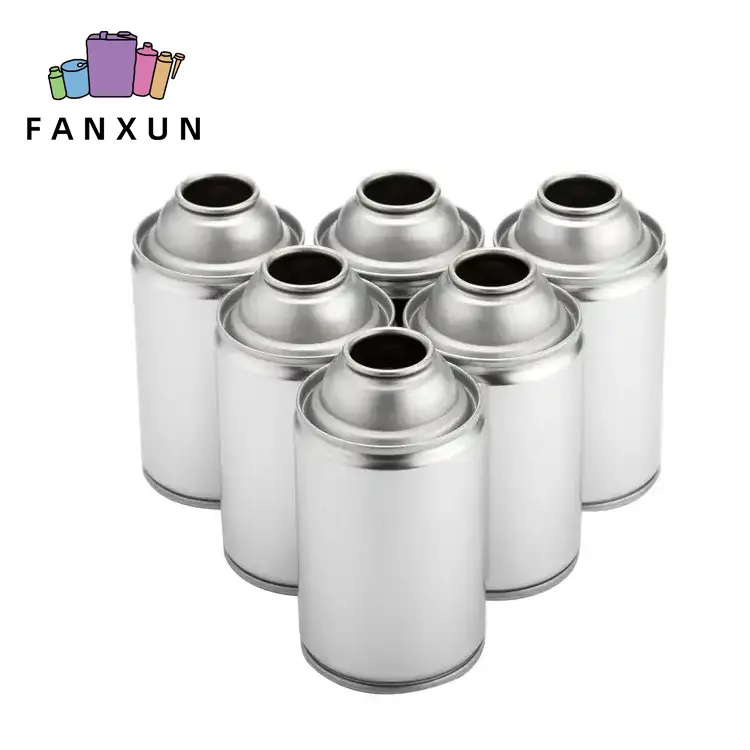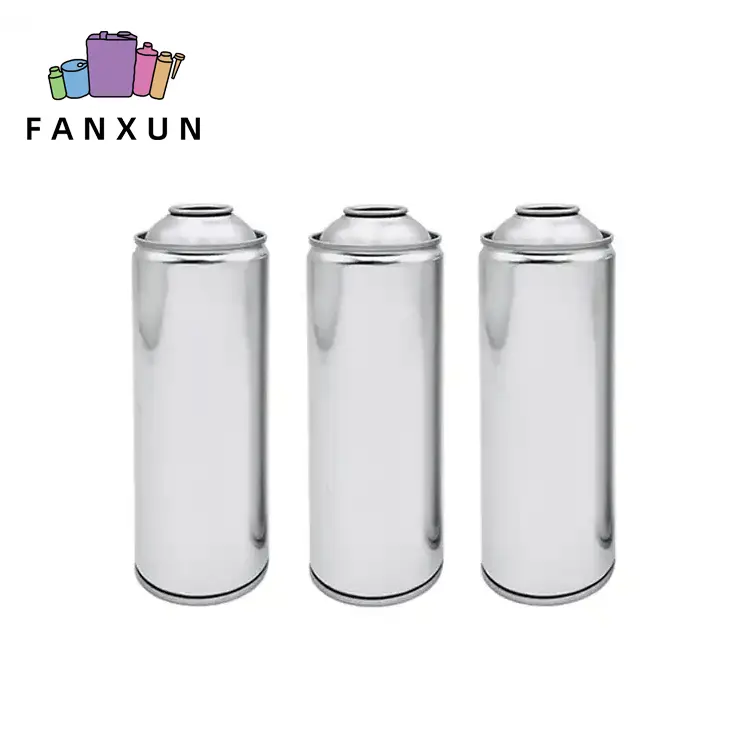An aerosol can is a spray device containing compressed gas and liquid medicine. It usually consists of a pressure tank and a nozzle. It works by pushing a compressed gas (usually a liquefied gas such as propane or butane) through pressure release. When the pressure is released, the liquid agent is dispersed into small droplets, forming a mist-like spray that can be carried by the air. This mist spray can cover the target surface more evenly and provide better adsorption and action effects.
Aerosol cans are convenient and easy to use, allowing users to trigger the spray simply by pressing the nozzle button or compressing the trigger on the can. At the same time, due to the separate storage of compressed gas and liquid medicine, aerosol cans have a longer shelf life. It is important to note that when using aerosol cans, you should follow safe operating guidelines and ensure that compressed gases and agents are used and stored correctly to avoid accidental injury or adverse consequences.


The development history and current situation of the aerosol can industry
From the early single-function aerosol cans to the current multi-functional aerosol cans, the aerosol can industry has experienced many technological upgrades and changes. For example, current aerosol cans not only have traditional moisture-proof and anti-corrosion functions, but also have anti-bacterial, deodorizing, fresh-keeping and other functions, providing consumers with more diversified choices.
Market size and growth trends of the aerosol can industry. According to market research by Apple Industry Research, the global aerosol can market size has shown a steady growth trend over the past few years. This is mainly due to the expanding application of aerosol cans in personal care, cosmetics, chemicals, car care and other fields, and is also driven by environmental protection policies and regulations.
Competitors
In the aerosol can market, the main competitors include aerosol cans made of glass, plastic, metal and other materials, as well as alternatives such as liquid dispensing. These competitors are working hard to improve the quality, performance and cost-effectiveness of their products to attract more consumers and market share
Aerosol can material
Aerosols are usually packaged in aluminum or tinplate cans. Tin-coated aerosol cans generally cost less than aluminum aerosol cans of the same size. However, aluminum aerosol cans are characterized by their pressure resistance and relatively high flexibility, which allow them to be manufactured in complex and easy-to-grip shapes. Consumers generally find them more flattering than tinplate aerosol cans. These characteristics create the core competitiveness of aluminum aerosol cans, and also make aluminum aerosol cans account for an increasing proportion of the total aerosol can production. Currently, there are seven companies with a market share of more than 80% in the U.S. metal aerosol cans. The top two companies are Ball and Crown, accounting for more than 50% of the total U.S. market.
The most popular choice in the aerosol can market is aluminum cans due to their superior performance and recyclability. Aluminum cans are light in weight, have good corrosion resistance, are opaque to light and oxygen, and are suitable for packaging cosmetics, medicines and food. Aluminum cans are also easily recycled and can be reused to make new cans, making many manufacturers more environmentally friendly. Hence, the aluminum segment is expected to account for the highest revenue share in the aerosol cans market. Plastic aerosol cans are lightweight and flexible, making them ideal for packaging products such as pesticides, perfumes and lubricants. In addition, plastic jars are easy to manufacture and can be customized according to customer needs. However, plastic cans are not as environmentally friendly as aluminum cans and have been criticized for their impact on the environment. However, the convenience and low cost of plastic jars continue to drive demand for plastic jars.
Forecast of the development prospects of the aerosol can industry
There is currently a significant increase in demand for aerosol cans in emerging countries in Asia Pacific, Latin America and Africa due to increased urbanization and rising disposable income. Additionally, these regions have also witnessed significant growth in the automotive industry due to increased investments in the industry. These factors have led to increased demand for aerosol cans in emerging countries, driving market growth. As consumers become more environmentally aware, sustainable packaging has become the focus of attention in all walks of life. The use of aerosol cans is increasing because they are recyclable, environmentally friendly and have a low carbon footprint. Additionally, many companies are focusing on developing aerosol cans using biodegradable materials, further driving the demand for sustainable aerosol cans.
Increasing consumer preference for personal care products such as deodorants, hair sprays, and body washes is a major driver of the market in recent years. Rising consumer hygiene and cleanliness awareness has further driven the demand for home care products. The healthcare industry is also expected to grow significantly due to the increasing demand for medical aerosol cans for various applications such as drug delivery, wound care, and disinfectants. Furthermore, in the automotive industry, the increasing demand for aerosol cans for vehicle maintenance and repair is expected to contribute significantly to the market growth.
